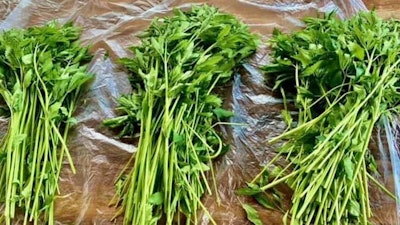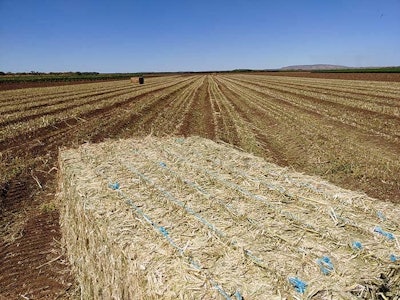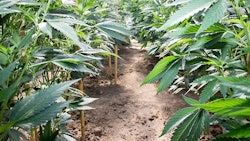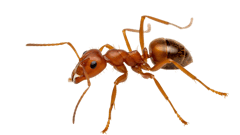
In the Land Down Under, researchers are investigating hemp and hemp-derived cannabinoids’ effect on sheep and cattle.
Scientists involved in the study, “Opening the gates to hemp fed livestock in Australia,” have been evaluating the tetrahydrocannabinol (THC) residues left over in the tissue of sheep grazing on hemp, as well as the hemp’s nutritional value for the sheep, according to Western Australia’s Department of Primary Industries and Regional Development (DPIRD).

In addition, the researchers are performing a pharmacokinetics study on sheep and cattle that they expect to end in summer 2022, explained Dr. Bronwyn Blake, a DPIRD research scientist who studies livestock and is leading the work. In that portion of the research, the scientists will IV-inject the livestock with a hemp extract to measure how it clears their bodies.
“In a changing climate, farmers will need a diverse portfolio of feed and cropping options,” Blake said. “With its fast growth rate and high biomass yield, hemp could offer a nutritious feed source for sheep and cattle.”
RELATED: Beyond Grain: Oregon Researchers Study Feeding Spent Hemp Biomass to Livestock
Currently, Australia and New Zealand consider THC a "contaminant," according to DPIRD. The government agency Food Standards Australia and New Zealand (FSANZ) doesn’t yet have enough data to “set a maximum level for THC in animal products,” so food sourced from animals can’t have any THC in it, per DPIRD.
In Phase 1 of the study, which took place in 2020 and 2021, Blake and her colleagues fed the sheep “pellets” of hemp biomass that they gathered following a hempseed harvest. The pellets consisted mainly of stalk, as well as flowers and leaves, and had a 0.002% THC concentration, Blake said.
“We fed the diets to these animals for 56 days, which is quite a long time, giving them every opportunity to express THC in their tissues,” Blake said. “Most THC was deposited in the subcutaneous fat, which was expected. Very low levels of THC were deposited, which is great. This means there is scope to determine withholding periods for livestock consuming hemp.”

The sheep digested more of the hemp than the control diet of oaten straw, Blake said. She added that she is interested in this because the hemp contained more fiber and lignin than the oaten straw, and fiber and lignin are “usually negatively correlated with digestibility. We are not sure why the digestibility was better and will investigate this further,” Blake said.
In the second phase of the study, Blake said she and the team will use flowering hemp “to gain a better understanding of cannabinoid metabolism pathways in ruminants.”
The researchers have also been speaking with Oregon State University scientists who are also conducting research on hemp biomass for animal feed “and plan to collaborate and communicate results as they come in,” Blake said. “We hope this research will be used by the FDA [U.S. Food and Drug Administration] and help hemp forage become a legislated feed ingredient in the future."


























